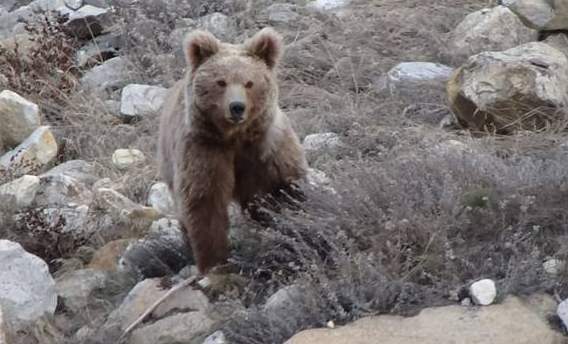Biodiversity & Environment
Habitat Loss of Himalayan Brown Bear
- 31 Oct 2020
- 2 min read
Why in News
Recently, a study conducted by scientists of the Zoological Survey of India on the Himalayan brown bear (Ursus arctos isabellinus) has predicted a significant reduction in suitable habitat and biological corridors of the Himalayan brown bear due to climate change.
Key Points
- The study titled ‘Adaptive spatial planning of protected area networks for conserving the Himalayan brown bear’ was carried out in the western Himalayas. It has predicted a decline of about 73% of the bear’s habitat by the year 2050.
- The total habitat loss can make 8 out of 13 PA completely uninhabitable by 2050.
- The western Himalaya where significant brown bear population is distributed is most vulnerable to global warming as this elevation belt is getting warmer faster than other elevation zones of Himalayas.
- To keep a check on this, scientists have recommended preemptive spatial planning of PAs in the Himalayan region for the long-term viability of the species.
- The spatial planning of PAs is aimed at minimising the risks and uncertainty of climate change.
- Spatial Planning is an activity centered on making decisions relating to the location and distribution of land use activities. It allows monitoring of changes, both in climate and socio-economic situations.
Himalayan Brown Bear
- Range: North-western and central Himalaya, including India, Pakistan, Nepal, the Tibetan Autonomous Region of China and Bhutan.
- Habitat: High altitude open valleys and pastures.
- Status: IUCN Red List- Critically endangered.
- CITES - Appendix I
- Indian Wildlife (Protection) Act of 1972 - Schedule 1
- Food: Omnivorous.
- Threat: Human-animal conflict, rapid habitat loss, poaching for fur, claws and organs and, in some rare cases, bear baiting.





